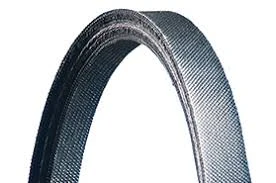- Arabic
- French
- Russian
- Spanish
- Portuguese
- Turkish
- Armenian
- English
- Albanian
- Amharic
- Azerbaijani
- Basque
- Belarusian
- Bengali
- Bosnian
- Bulgarian
- Catalan
- Cebuano
- Corsican
- Croatian
- Czech
- Danish
- Dutch
- Afrikaans
- Esperanto
- Estonian
- Finnish
- Frisian
- Galician
- Georgian
- German
- Greek
- Gujarati
- Haitian Creole
- hausa
- hawaiian
- Hebrew
- Hindi
- Miao
- Hungarian
- Icelandic
- igbo
- Indonesian
- irish
- Italian
- Japanese
- Javanese
- Kannada
- kazakh
- Khmer
- Rwandese
- Korean
- Kurdish
- Kyrgyz
- Lao
- Latin
- Latvian
- Lithuanian
- Luxembourgish
- Macedonian
- Malgashi
- Malay
- Malayalam
- Maltese
- Maori
- Marathi
- Mongolian
- Myanmar
- Nepali
- Norwegian
- Norwegian
- Occitan
- Pashto
- Persian
- Polish
- Punjabi
- Romanian
- Samoan
- Scottish Gaelic
- Serbian
- Sesotho
- Shona
- Sindhi
- Sinhala
- Slovak
- Slovenian
- Somali
- Sundanese
- Swahili
- Swedish
- Tagalog
- Tajik
- Tamil
- Tatar
- Telugu
- Thai
- Turkmen
- Ukrainian
- Urdu
- Uighur
- Uzbek
- Vietnamese
- Welsh
- Bantu
- Yiddish
- Yoruba
- Zulu
Dec . 25, 2024 20:47 Back to list
flat belts
Understanding Flat Belts Essential Components in Mechanical Transmission
Flat belts have been a fundamental component in the world of mechanical transmission for many years. Recognized for their simplicity and effectiveness, flat belts are primarily used in various applications to transmit power and motion between rotating shafts. This article delves into the composition, advantages, applications, and future trends of flat belts in mechanical systems.
Composition and Design
Flat belts are typically made from materials like rubber, leather, fabric, or a combination of these, providing both flexibility and strength. The design of a flat belt is relatively straightforward, consisting of a long, flat strip that transmits power from one pulley to another without the need for gears or chains. This simplicity in design is one of the key reasons for their widespread use.
Flat belts are characterized by their width and thickness, which influence their load-carrying capacity and efficiency. The width of a flat belt determines how much power it can transmit, while the thickness is important for durability and longevity. Additionally, flat belts are designed to have a certain degree of stretch to accommodate variations in operating conditions.
Advantages of Flat Belts
One of the most significant advantages of flat belts is their ability to transmit power smoothly. Unlike chain drives or gear systems, flat belts do not have metal-to-metal contact, which reduces noise and wear. This smooth operation is particularly beneficial in applications requiring precise motion control, such as in conveyor systems.
Flat belts are also relatively lightweight and flexible, which allows for easier installation and maintenance. They can operate over long distances, making them suitable for applications where the drive and load are separated by a considerable distance. Moreover, flat belts can be easily replaced without much effort, resulting in reduced downtime during maintenance.
Another advantage is the variety of configurations possible with flat belts. They can be used in single or multiple belt systems, allowing for flexibility in design, whether in industrial machinery or small-scale applications. Their adaptability makes flat belts suitable for a wide range of environments, from factories to home appliances.
Applications of Flat Belts
flat belts

The applications of flat belts are virtually limitless. In industrial settings, they are often used in machinery such as lathes, milling machines, and conveyor systems. Flat belts can efficiently transmit power between driving and driven shafts, allowing for the handling of heavy loads with ease.
In manufacturing, flat belts are commonly employed in assembly lines, where they play a crucial role in moving products from one stage to another. Their ability to handle different materials and weights makes them ideal for diverse applications, from packaging to woodworking.
Additionally, flat belts are used in household appliances like washing machines and vacuum cleaners, where their flexibility and smooth operation contribute to the overall performance of the devices. They are also present in automotive applications, such as alternators and air conditioning compressors, showcasing their versatility.
Future Trends
As technology continues to advance, the future of flat belts appears promising. Innovations in materials science may lead to the development of more robust and efficient flat belts, enhancing their performance. For example, the integration of synthetic fibers and composites can improve strength while reducing weight.
Moreover, automation and smart technologies are making their way into mechanical systems. The integration of sensors and IoT (Internet of Things) technology could lead to smarter monitoring of flat belt performance, allowing for predictive maintenance and improved operational efficiency.
Sustainability is also becoming a key consideration in the design and manufacturing of flat belts. As industries move towards more environmentally friendly practices, the demand for biodegradable and recyclable materials will likely influence future flat belt designs.
Conclusion
Flat belts play a critical role in the mechanical transmission landscape, offering advantages that have made them indispensable across various industries. From their simple design and flexibility to their wide range of applications, flat belts remain a reliable choice for power transmission solutions. As advancements continue in materials and technology, the future of flat belts looks bright, promising enhanced performance and sustainability in mechanical engineering applications. Whether in industrial machinery or everyday appliances, flat belts will continue to be a significant player in the world of mechanical systems.
-
Korean Auto Parts Timing Belt 24312-37500 For Hyundai/Kia
NewsMar.07,2025
-
7PK2300 90916-T2024 RIBBED BELT POLY V BELT PK BELT
NewsMar.07,2025
-
Chinese Auto Belt Factory 310-2M-22 For BMW/Mercedes-Benz
NewsMar.07,2025
-
Chinese Auto Belt Factory 310-2M-22 For BMW/Mercedes-Benz
NewsMar.07,2025
-
90916-02660 PK Belt 6PK1680 For Toyota
NewsMar.07,2025
-
drive belt serpentine belt
NewsMar.07,2025

